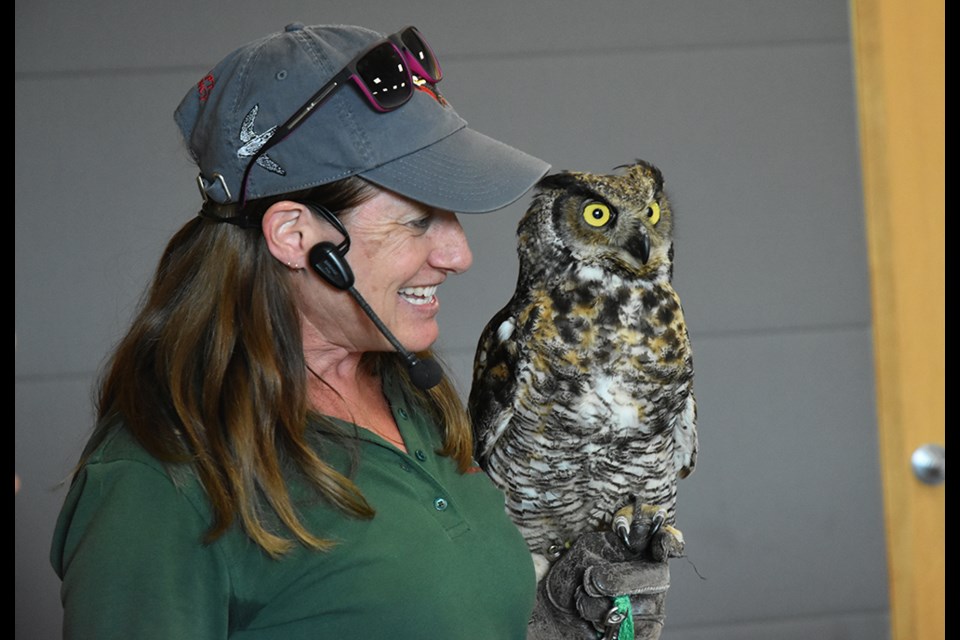Meet the Usain Bolt of the bird world.
And a bird that lives and hunts co-operatively, perching on cacti to get a better glimpse of its desert prey.
Or a bird with eyes so large, compared to its skull size, that a human being with the same proportions would have eyes the size of oranges.
Welcome to the world of raptors, as introduced at the Bradford West Gwillimbury Public Library on July 10 by the Canadian Raptor Conservancy.
“We’re not going to be talking about a basketball team or dinosaurs. We’re talking about birds of prey,” said Shauna Cowan, who has worked at the conservancy near Port Dover since it opened about 20 years ago.
The conservancy is now home to approximately 200 birds, belonging to some 30 different species. Its programs include the breeding of endangered species, and the raising and training of birds of prey to scare other birds away from vineyards, golf courses, and especially airports, where bird strikes pose a hazard.
But their biggest role is in public education – engaging and entertaining crowds, like the sold-out show at the library.
Cowan introduced the tiny but speedy (in short spurts) American kestrel – once called a sparrow hawk; a Harris hawk from the deserts of North America, that hunts co-operatively and shares its prey; and a Great Horned Owl.
She also brought out a red-tailed hawk – Cowan called it a “highway hawk,” often spotted along Ontario highways perched on hydro poles – and a mature bald eagle, once totally extirpated from southern Ontario and now making a comeback.
Cowan called the return of the bald eagle an “awesome success story.” Poor water quality led to the disappearance of the species in Ontario in 1980, but since then, pollution control efforts have allowed the birds to return.
There are now 96 nesting pairs of bald eagles in Ontario, "up from zero in 1980," moving the species from extirpated, to endangered, and now to at risk.
From the tiny kestrel, weighing less than 100 grams, to the bald eagle, weighing in at about 3.5 kilograms and with a wingspan of nearly two metres, all raptors – eagles, hawks, falcons, owls and vultures – share certain characteristics.
They have “keen eyesight… so they can see really, really well,” Cowan said.
They have sharply hooked beaks for tearing into prey, and sharp talons on the end of their feet for grasping.
And their diet consists of “meat, only meat – no seeds, no fruits,” she said.
The show at the library was thrilling, as Cowan brought the raptors around the room and encouraged them to fly, wings extended, to her gloved hand.
The Great Horned Owl was especially impressive, its flight totally silent thanks to its fringed feathers that muffle the sound, its large golden eyes fixed, its head swivelling to catch sight of prey and to hear the noises of its prey.
All but the Harris hawk can be spotted in the Bradford West Gwillimbury area, said Cowan, seen along roadways, near forested areas, perched on tall dead trees or telephone poles.
“All you have to do is look up.”



